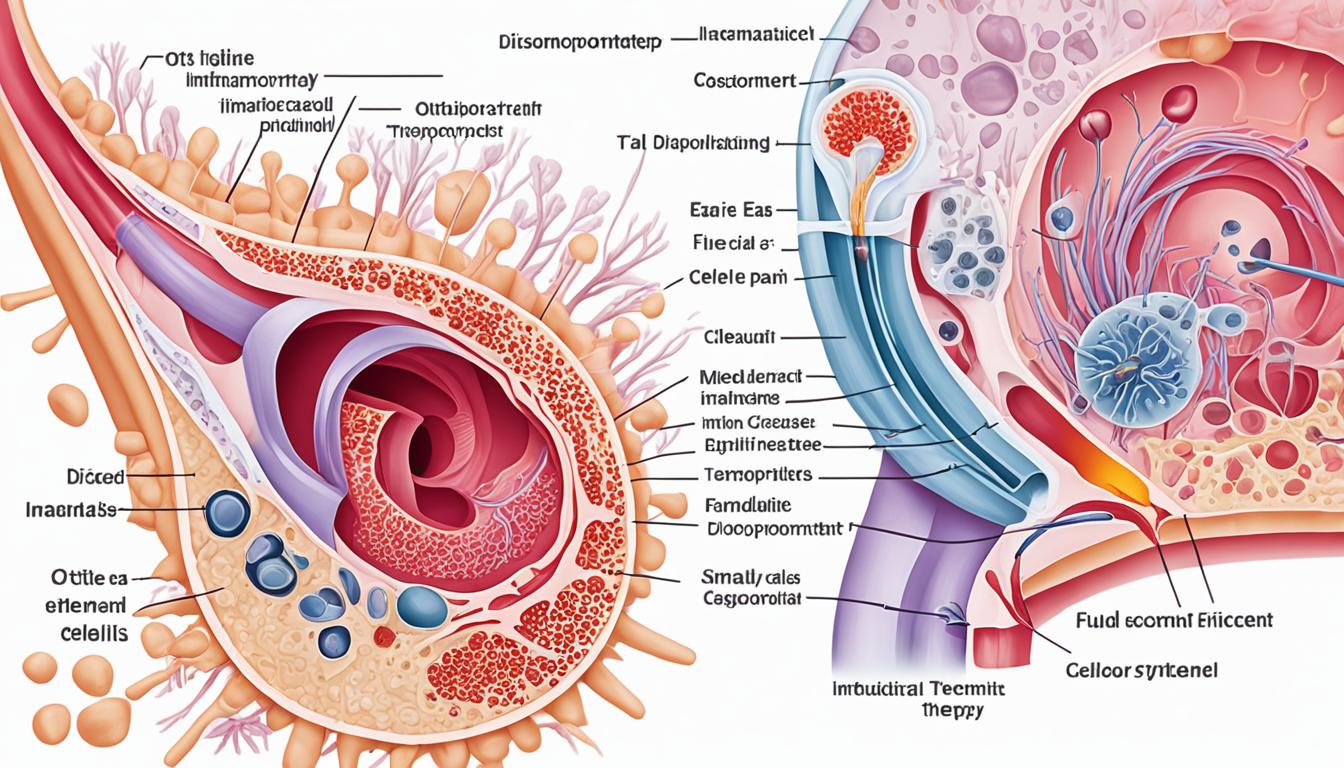Otitis media is a middle ear infection. It can cause earache, fever, and hearing problems. If left untreated, it may lead to complications.
The main symptoms include sudden ear pain, fever, and hearing difficulties. In severe cases, the eardrum may rupture. This can result in pus or fluid draining.
Viral or bacterial infections often cause otitis media. It commonly follows an upper respiratory infection. Risk factors include Eustachian tube dysfunction, daycare attendance, pacifier use, and lack of breastfeeding.
Diagnosis involves taking a medical history and physical exam. An otoscopic examination is also done. Tympanometry and audiometry assess middle ear function and hearing ability.
Conventional treatments like antibiotics and pain relievers are used. Innovative stem cell therapy may regenerate damaged tissues and restore hearing.
Key Takeaways
- Otitis media is a common childhood illness with serious consequences if untreated.
- Symptoms include ear pain, fever, hearing difficulties, and eardrum rupture in severe cases.
- It’s typically caused by viral or bacterial infections after an upper respiratory infection.
- Diagnosis involves medical history, physical exam, and tests to evaluate middle ear and hearing.
- In addition to conventional treatments, stem cell therapy may regenerate tissues and restore hearing.
Understanding Otitis Media
Definition and Overview
Otitis media refers to middle ear inflammation. It can occur as an acute infection or a chronic condition with fluid buildup.
Acute otitis media often follows respiratory infections. It causes rapid ear pain, fever, and hearing issues.
“Glue ear” refers to fluid accumulation behind the eardrum. Without treatment, it may lead to hearing loss.
Types of Otitis Media
Acute otitis media is a common childhood illness. It often follows an upper respiratory tract infection, causing rapid onset of ear pain, fever, and hearing problems.
Otitis media with effusion, also known as “glue ear”, is characterized by fluid buildup behind an intact eardrum. Unlike acute infections, it lacks signs and symptoms of infection. However, it can lead to hearing loss if left untreated.
Otitis Media: Causes and Risk Factors
Otitis media is a common middle ear infection. It stems from various factors like viral infections, bacterial infections, and Eustachian tube issues. Understanding the causes is vital for prevention.
Viral and Bacterial Infections
Viral infections like the common cold inflame the middle ear. Bacteria like Streptococcus pneumoniae cause acute otitis media. Viral infections weaken immunity, increasing bacterial infection risk.
Eustachian Tube Dysfunction
The Eustachian tube connects the middle ear and throat. When dysfunctional, it causes fluid buildup and infection susceptibility. This leads to otitis media development.
Environmental and Lifestyle Factors
Secondhand smoke exposure, daycare attendance, lack of breastfeeding increase otitis media risk. Pacifiers and bottles promote Eustachian tube dysfunction and infection spread.
Conclusion
Otitis media is a common childhood illness. It can have serious consequences if not treated. Understanding causes, risk factors, and types is crucial for early diagnosis and proper treatment.
Conventional treatments like antibiotics and pain relievers remain important. However, innovative therapies like stem cell therapy are being explored. These aim to regenerate damaged middle ear tissues and restore hearing.
Prompt medical care, preventive measures, and a multifaceted approach are essential. This minimizes long-term complications. Parents and healthcare professionals must work together for children’s well-being.
As research advances, otitis media management will become more effective and personalized. A comprehensive understanding enhances care and outcomes. This improves quality of life for affected children and families.

